The biggest problem facing the only synagogue in the Amazonian city of Iquitos, Peru, is that nobody knows where it is. Hotel concierges won’t know what you’re talking about; tell a moto-taxi driver to take you there and he’ll shake his head briskly and drive away. Ask a middle-aged police officer wearing faded pink lipstick who’s standing idly at the corner of the Plaza de Armas, the city’s main square, and she’ll asked her two friends, a bank security guard and the man with a machete selling coconuts for a buck apiece before laughing at how nobody knows what you’re talking about.
Iquitos is a difficult city by any measure – it’s hard to reach, hard to digest and hard to live in, buried so deep northeast into the Peruvian Amazon that you can’t even drive there, since no roads connect it to the outside world. To arrive, you must fly in from Lima or hitch a ride on a cargo boat, sleeping in hammocks and snaking through jungle rivers for up to four days straight.
READ: BARCELONA HOME TO ONE OF EUROPE’S OLDEST SHULS
Immediately upon stepping off the plane with my girlfriend and de facto Spanish translator, we met with a humidity we never knew existed – an inescapable 90 per cent year-round one, that keeps palm trees moist and the sky an unpredictable shade of grey. There’s no escaping it; you sweat just standing still. As we toured the city that afternoon, we found restaurants overpriced (after all, you’ve got to add the cost of shipping ingredients more than 1,000 kilometres from Lima into your bill), mosquitos buzzing everywhere, fearless dragonflies landing on our clothes and rampant poverty stifling riverside villages propped up by decrepit wooden stilts for when the water levels rise.
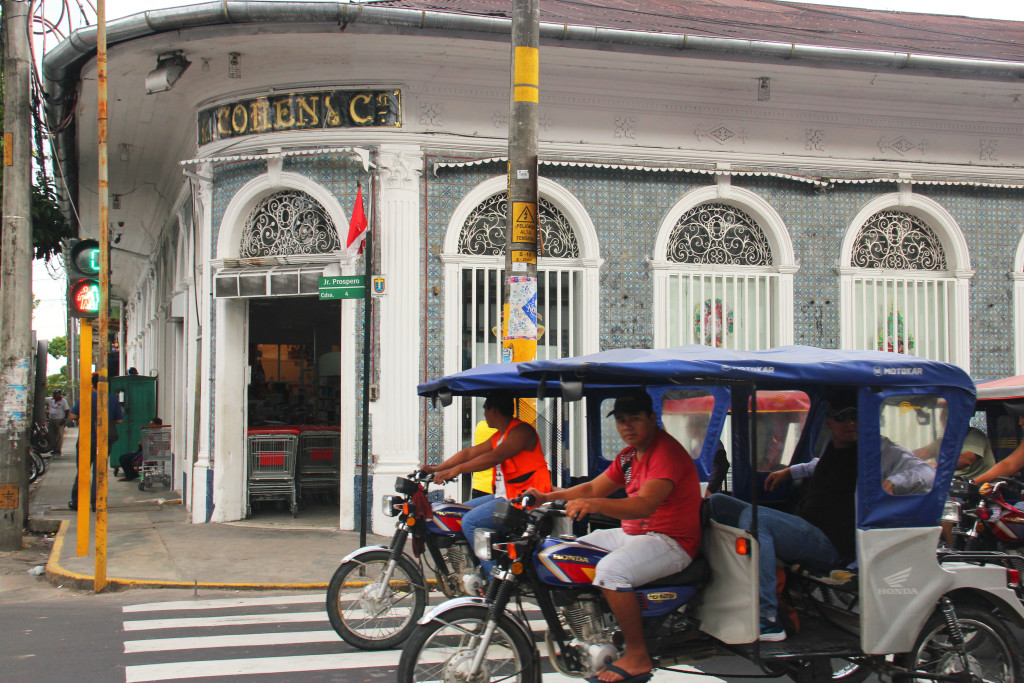
It struck us as odd, then, that this should be home to the second largest Jewish community in Peru.
I first read about these so-called “Amazonian Jews” in the context of their Israeli dreams: hundreds of Iquiteño Jews have made aliyah and moved to the Holy Land in the last two decades, mostly to the central city of Ramla. But that publicity is almost all that’s known about them.
What fascinated me more than those who left were those who stayed, that handful of practising Jews whose very existence faces constant pressure by, on one side, Lima’s Ashkenazi elite (who don’t consider the Iquiteños Jews at all, since they’re almost entirely descendants of Jewish men), and on the other by the allure of abandoning impoverished Peru for First World Israel. Who built the synagogue? How do they keep kosher? And why, frankly, do they bother with Judaism at all?
* * *
We decided to start with the synagogue. I’d looked up the address online – Próspero 241, near the central Plaza de Armas in the city’s dirty colonial downtown, where every building features old Maltese balconies, arched doors and wooden shutters – but we missed it walking up and down main street. Instead, having gone too far south, we found a subtle artifact of the city’s Jewish past: above the main doorway of a large one-story supermarket at the corner of Próspero and Morona, beautifully tiled with ornate iron grills over the windows, we noticed the twisty art nouveau words, “Cohen & Co.” The building, we’d later learn, was built by a wealthy Jewish man in 1905 and sold once his family moved in the mid-1910s.
“IF IQUITOS IS A CITY HIDDEN IN THE JUNGLE, ITS JEWS ARE A COMMUNITY HIDDEN DEEPER THEREIN”
The air was too muggy to keep pacing the streets endlessly, so we decided to hitch a moto-taxi to the city’s quasi-famed Jewish cemetery. An online map pointed to a plot of land at the intersection of Putumayo and Alzamora, a dozen or so blocks north of where we were, but we arrived only to find in its place the Max Augustín Stadium, a newly built out-of-place 25,000-seat soccer arena. Aggravated, we asked a nearby shopkeeper where the nearest cemetery was, and she told us to try the central one, a five-minute ride south, near the lively and pungent Belen Market.
If Iquitos is a city hidden in the jungle, its Jews are a community hidden deeper therein.
The Cementerio de Iquitos is big and beautiful, with 15-foot-tall rows of graves cast in cement, variously painted bright pink and baby blue and divided by smooth marble graves built with personal benches and decorated with flowers. On top of one little girl’s affluent tomb stood a five-foot-tall pink castle covered in ribbons, flowers and a Hello Kitty balloon.
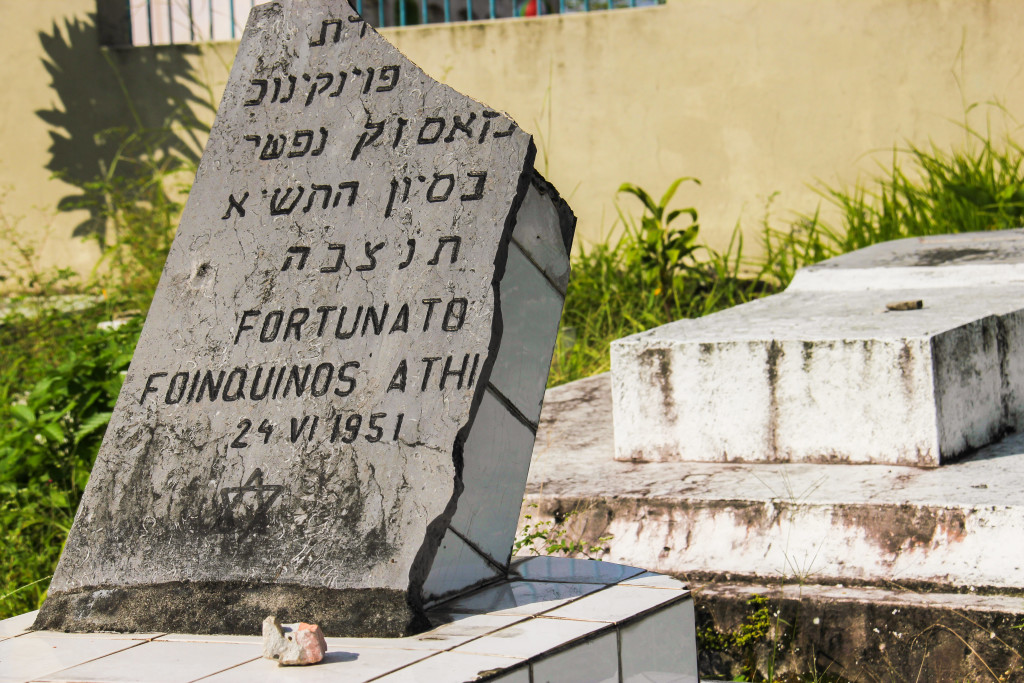
But we couldn’t find the Jews, so we asked a security guard, who pointed us to the grounds’ far southwest corner. There we spied a relatively small gated-off section marked by a tiny placard that read “CEMENTERIO ISRAELITA.”
The Jewish section is a bit depressing after seeing the grandeur of what Catholics do for their dead. Only half full, several tombstones are cracked and broken, and there’s no colour beyond the green of the long-uncut grass. A lone palm tree offers some shade from the blistering sun, but there are no flowers lain peacefully on the fewer than 70 graves – only a handful of small grey stones strewn across the tops.
Still, there is something inspiring about seeing a Star of David this far into the world – these people, Davids in Goliath’s country, staunchly buried in the ground for as long as the city stands. That the Jewish section is only half full felt at first dismal, but then hopeful, as if they really expected to fill it one day.
Everything Jewish in Iquitos is like this, quiet but proud, hidden but obvious if you know where to look. We learned this once we returned to the downtown core, and, after enjoying a cone of aguaje ice cream from Ari’s Burger in the central plaza, traced the street numbers to find the synagogue.
At least, we thought it was the synagogue. Inside, all we saw were two bored employees standing next to heaps of foam mattresses, a broad wooden table and spools of colourful 10-foot-wide vinyl.
We asked them, awkwardly, if this was a place where Jews gathered, and the two employees glanced at each other and sighed as one of them headed into a dark back room separated only by a thin sheet, returning with a squat man in his 60s, maybe five-foot-six, wearing loose-fitting pleated slacks, a checked shirt and an inquisitive look on his face.
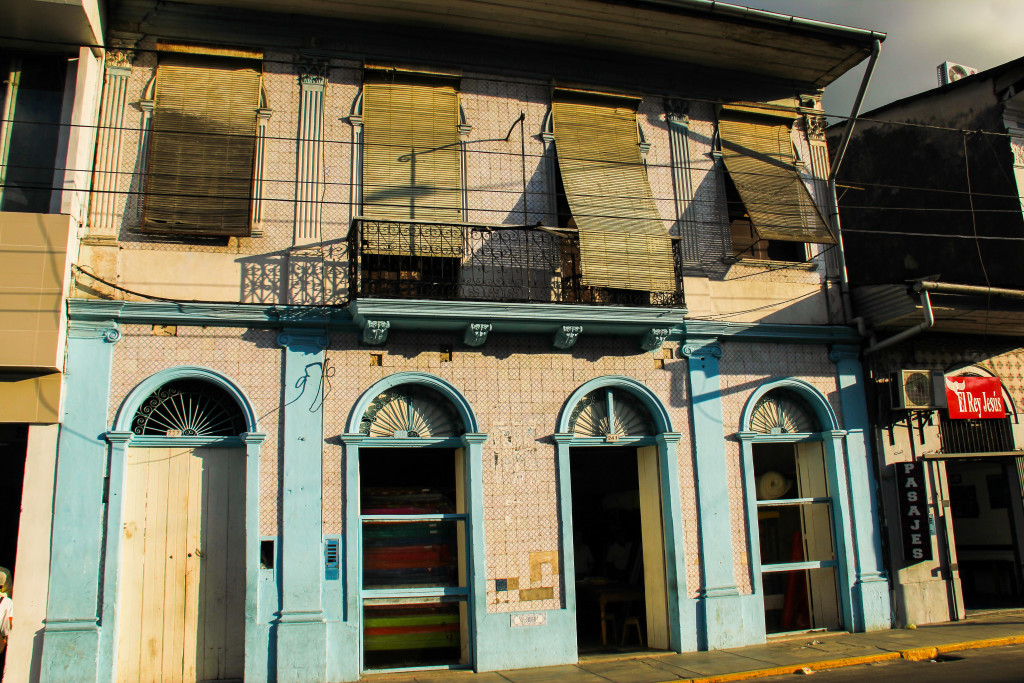
This was Jorge Abramovitz, leader of the Amazonian Jews.
* * *
There aren’t many opportunities for tradition here, but there is one they stick to.
Every Friday at 7 p.m., some 40-odd Iquiteño Jews gather in the backroom synagogue Jorge runs out of his house for the Kabbalat Shabbat service. They recite the prayers, from Lechu Neranena to Lechah Dodi; they enjoy shot glasses of wine and slices of homemade bread; and they sway, back and forth, arms-over-shoulders, connected in a circle, singing Shalom Aleichem over the heavy jungle rain pitter-pattering on the tin roof above.
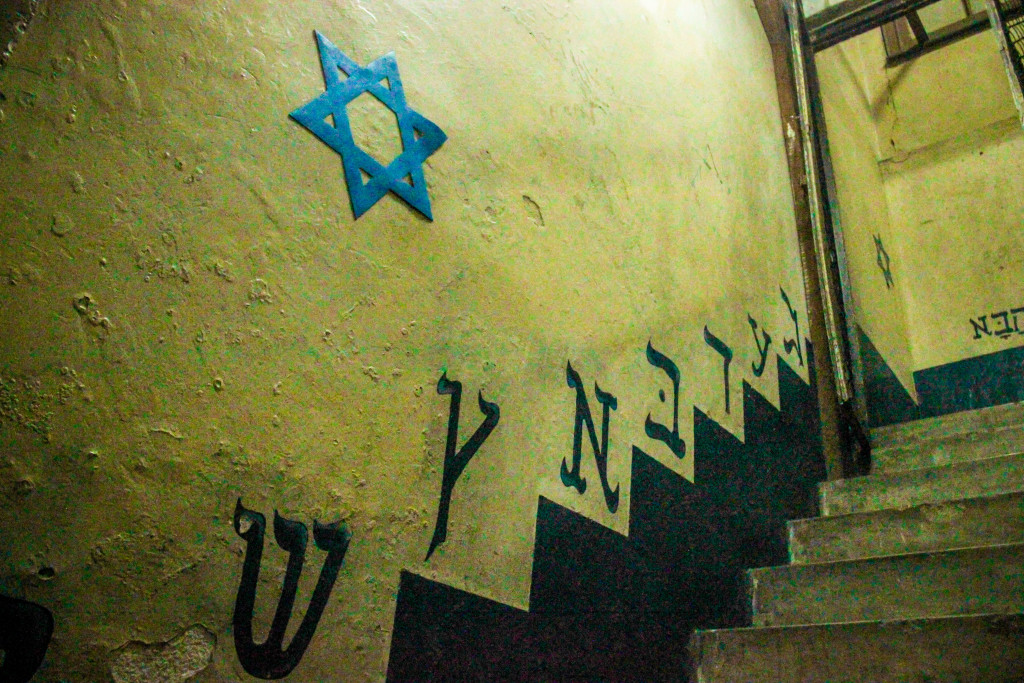
They’ve been doing this ever since Jorge transformed his back room in 2002 – something he never wanted to do in the first place. “It was a big commitment,” he explained. When he bought the sizable property, he moved his family into the middle part – there are bedrooms connected to a central courtyard, which they use as a living room, as well as an office to the side and space for his mattress business out front. It was his wife’s idea to open up the back as a makeshift synagogue. After all, where else could they congregate?
Jorge’s property is magnificent. A cracked wooden front door leads to a grungy staircase, dimly lit and painted with blue Assyrian Hebrew script. At the top of the stairs there is a gorgeous open-air hallway, adorned with crawling leafy vines and Zionist posters quoting Theodore Herzl, which leads to their synagogue, filled only by a modest array of blue plastic chairs, a wide Israeli flag strung up in the back and some lingering Chanukah decorations, seemingly made by children, taped to the porous white walls.
When we first descended into the synagogue, we met Rifka, Jorge’s wife. Her first question: “Have you seen our Torah yet?” She gestured to the large wooden case standing in the corner, donated to them with the book by a wealthy New York couple in 2009, even though nobody in Iquitos can speak or read Hebrew fluently.
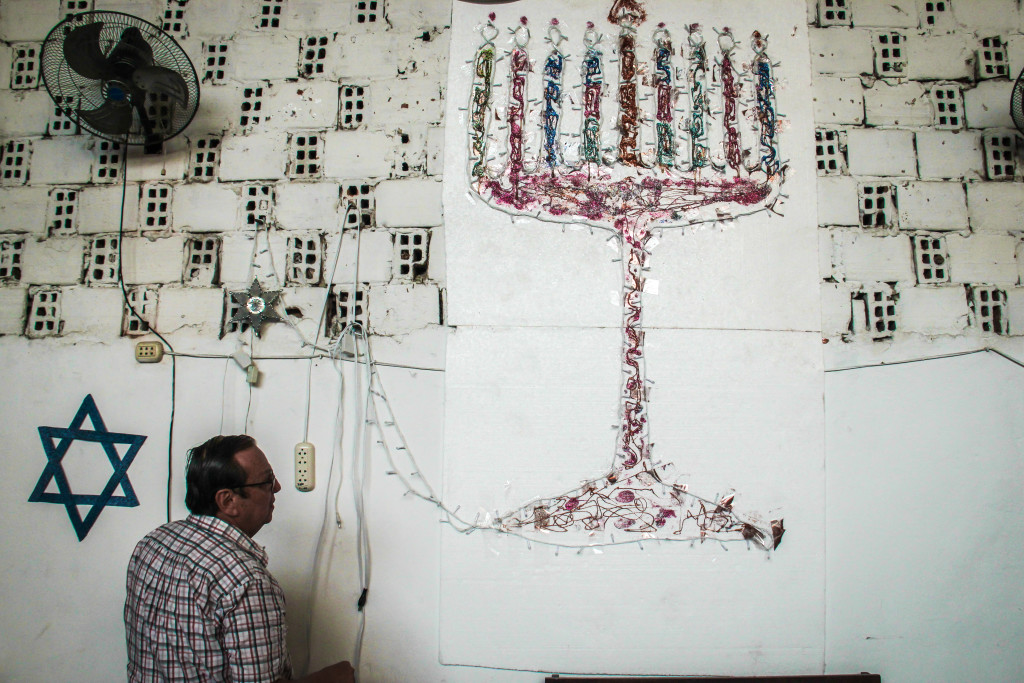
Still, their religious pride is obvious. When we sat down with them upon our first meeting, they quickly and eagerly launched into a list of famous Jewish Iquiteños: Victor Israel, who founded the city’s Jewish society in 1911; Saloman Joseph Dreyfus, local mayor from 1952 to 1956; Dora Toledano Godier, voted Miss Peru in 1963.
Then they dove into the history of the Amazonian Jews, starting with the rubber boom in 1880, when Moroccan Sephardim arrived in Iquitos by way of Manaus, Brazil. Businessmen and politicians, they enjoyed four decades of prosperous assimilation before World War I, when the rubber boom busted and 75 per cent of the Jewish community left for opportunities elsewhere. The Cohen building we’d seen earlier was sold during this exodus, along with several other large downtown properties built by Jews, later given up or forgotten.
The mid-20th century was a quiet era for Iquiteño Jews, their religion cultivated and defined by isolation. Before the Iquitos airport was built near the end of the 20th century, Jorge says, it took two months to reach Lima by riverboat – but only 18 days to sail to Europe. Because of this, they’ve always been spiritually closer to European Jews than Limeños, (Lima residents) a fact which likely exacerbated the pseudo-rivalry that persists today.
READ: A TOUR GUIDE FOR JEWS AND ISRAELIS TRAVELLING TO THAILAND
“It’s not easy being Jewish here,” Jorge acknowledged. Limeños have a network – their community is more than a thousand strong. Here, they can’t even keep kosher, because they have no local rabbis; they can do little more than avoid pork. But Jorge is just as quick to point out how much more gratifying it is to be the underdog. “We feel more connected to Judaism,” he said.
Left behind in Iquitos are the 60 or 70 Jews who have no desire to leave home, who still attend the weekly Kabbalat Shabbat meetings in Jorge’s synagogue. Rifka estimates there are hundreds more Iquiteños oblivious to their Jewish heritage, but, as she told us, “It’s not as if we can knock on their doors and ask, ‘Hey, do you know where your last name is from?’”
* * *
There are two demographics of Iquiteño Jews: kids and parents. Anyone in between, those 20-and 30-somethings, are the ones making aliyah, leaving a working-age gap in the local Jewish population. When I asked whether that worried Rifka, she acknowledged it did. “This is the problem we’re facing,” she said. “Who will continue our tradition?” Her own son and daughter moved to Israel in 2011 and 2013; Jorge and Rifka have never been able to visit.
On Fridays, Jorge’s synagogue is packed with these split demographics. Of the 36 people there that night, roughly a third were small children – fidgeting, sleeping, shouting obliviously loudly about their hunger. Six metal fans hung from the walls, but only four worked, so we fanned ourselves with our Sinagoga Lehavat Jaim Sidur prayer books.
Sebastien, a sharp and quiet 17 year old, sat at the front of the room and led the service – the men rotate this responsibility each week – fluidly moving from Hebrew prayers to Spanish stories over the next hour, his voice intermittently drowned out by the rain violently rattling the tin roof over our heads.
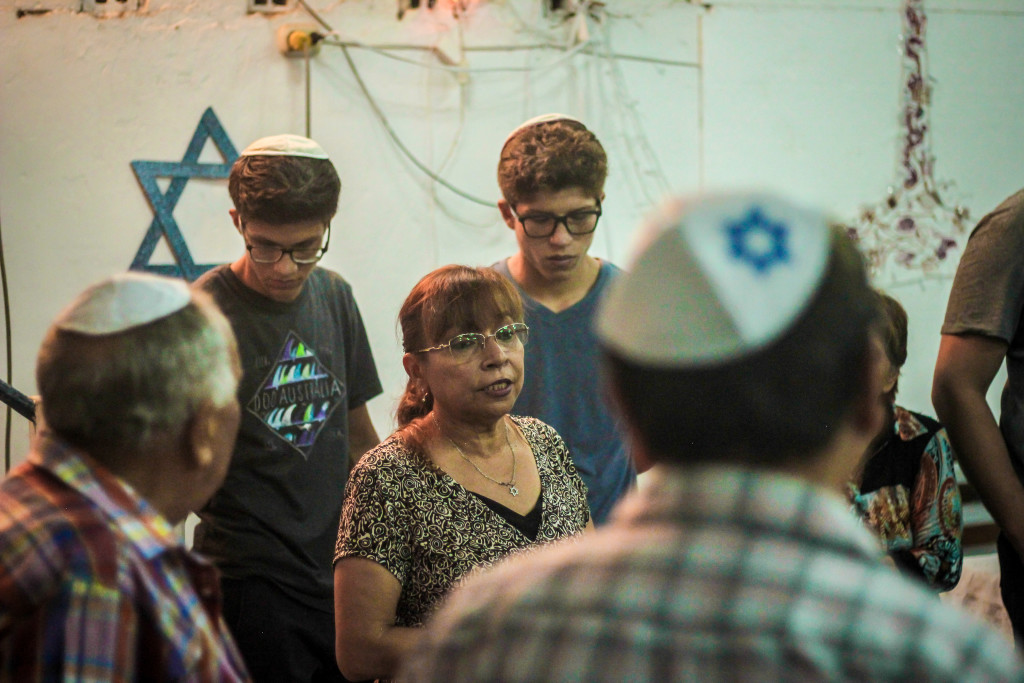
And then, at the end, the tradition: everyone moved their chairs off to the side and side-hugged their neighbour. Rifka looked excitedly at me, pleased that I should witness their strength and unity. We formed a large circle, linked at the shoulders, and began gently swaying left to right; though I hadn’t sung Shalom Aleichem in years, the words came back to me, and it felt oddly comforting to know that, for the first time this entire trip, I could speak the same language as those who live here.
Despite all the hardships, this tribe of Jews, tucked away among the vines and palms of the Amazon, has persevered. That is, after all, what this religion is all about. As Rifka told us with more than a hint of pride, “Here, it’s difficult to be Jewish.”
Difficult, yes. But not impossible.









